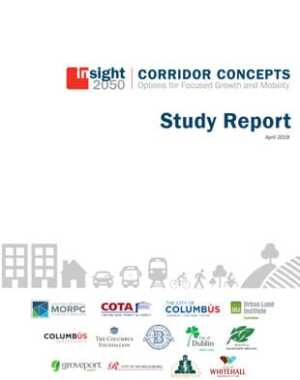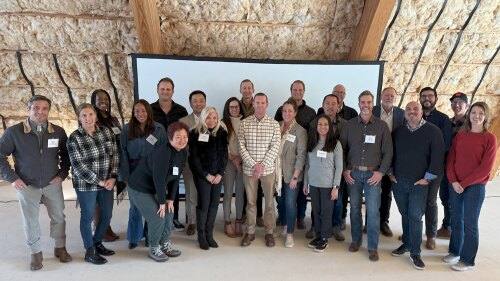The population of Columbus, Ohio, is growing rapidly, surpassing that of San Francisco, according to U.S. Census Bureau data from 2018. Central Ohio is on a path to become a region of 3 million people by 2050. In light of the expected growth, local leaders, including the chairman of ULI Columbus Yaromir Steiner, commissioned the Corridor ConceptsReport to better understand how to promote thoughtful development. In the spring of 2019, the much-anticipated report was released, detailing how promoting walkable, compact neighborhoods with high-capacity transit along major corridors can improve the quality of life for current residents and those who have yet to discover central Ohio as their home.
The Corridor Concepts Report analyzes five major corridors in the region: Northeast, East Main Street, Northwest, Southeast, and West Broad Street. The study compares the current trajectory—growth without dedicated rights-of-way along corridors for transit, limited mobility options, and a lack of compact, mixed-use development along the corridors—to projected outcomes if a focused corridor concept is implemented with enhanced mobility, more compact communities, and dedicated rights-of-way. While the study specifically concentrates on five major corridors, the principles are intended to be applied to other similar thoroughfares.
The current trajectory is problematic because no high-capacity transit or increased mobility options exist where growth is expected. Under the current trajectory, 82 percent of new homes will be built outside the five corridors. By 2050, 73 percent of housing will be standard suburban, and most of the development will take place in lower-density suburban areas with the exception of some mixed-use development in downtown Columbus. Similarly, 60 percent of job growth is projected for suburban areas, in office parks and commercial centers.
However, if a focused corridor concept is adopted, most of the job growth and housing development is projected to stay within the corridors. The new home growth would consist of 20 percent single-family residences and 80 percent townhouses and multifamily units, promoting denser corridor communities within walking distance of employment opportunities and amenities.
In addition, other positive anticipated outcomes are associated with the focused corridors concept, including a decrease by a third in costs for capital improvements and maintenance of roads, sewers, water, wastewater, and emergency services (from $30.1 billion projected costs to $19.3 billion); an increase of $1 billion in local tax revenue associated with new development, including income, property, and sales tax; and improvement to transportation accessibility. Also, the study suggests that our reliance on vehicles will significantly decrease, amounting to savings for households in and out of the corridor areas.
To implement the focused corridor concept, the report recommends various changes in policy and law, including amending codes for Columbus, suburban municipalities, counties and townships. Over the next two to four years, the report recommends that the local governments create two new zoning districts with lower limitations on height, density, and scale. The report suggests that the corridor zoning district standards address transition areas where each corridor abuts adjoining neighborhoods. Also, reduced parking requirements are recommended based on changes in mobility and access to high-capacity transit.
While the findings have piqued the interest of local officials, it will take years to amend the zoning code for suburban jurisdictions. Recognizing the challenge ahead, the report’s authors recommend that the city, as a preliminary step, continue to rely on variances, limitation texts, and overlays to encourage mixed-use, compact development within the corridors. While the report acknowledges that the current processes are time-consuming, in order to start working toward the focused corridor concept, neighborhood groups, developers, and planning staff need to make decisions with some flexibility, recognizing that changes are on the way and that central Ohio will look very different in 30 years—the only question is whether we will stick to the current trajectory or collectively work toward a more thoughtful alternative.
The report was prepared by UrbanFootprint, formerly known as Calthorpe Analytics, based out of Berkeley, California.
KATARINA KARAC is a zoning and land use attorney with central Ohio law firm Underhill & Hodge and a member of ULI Columbus.






